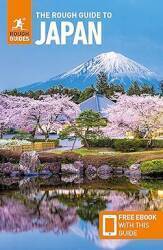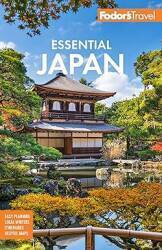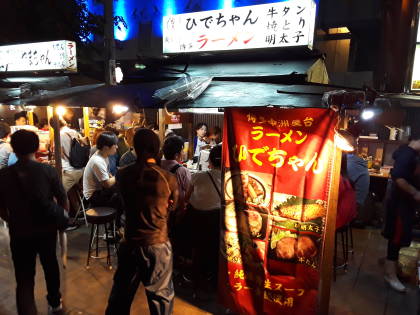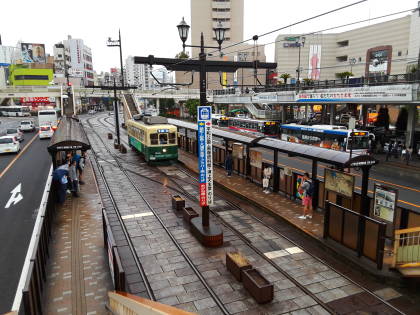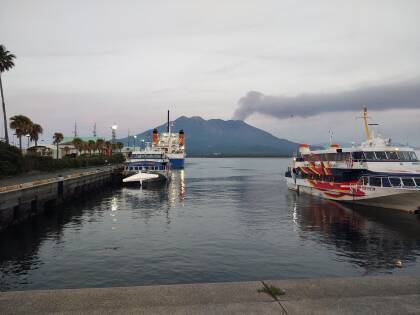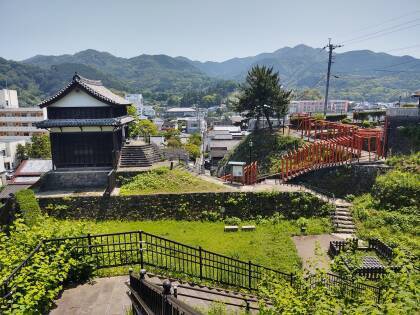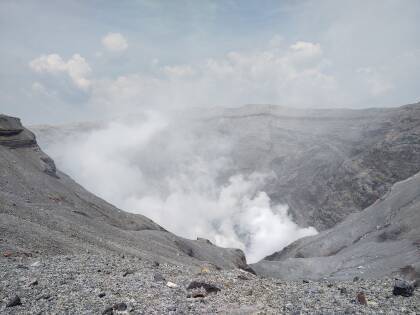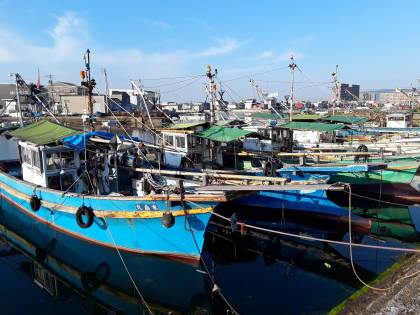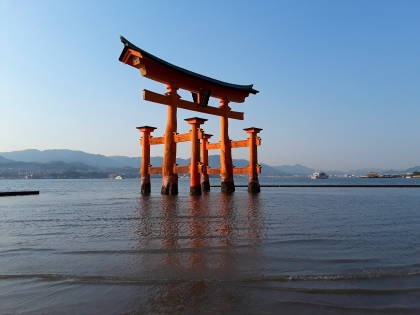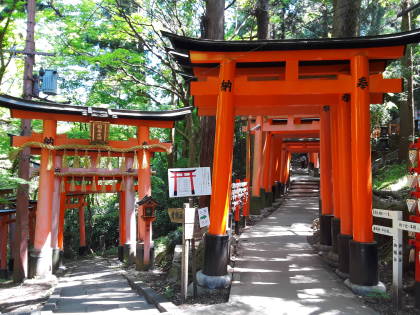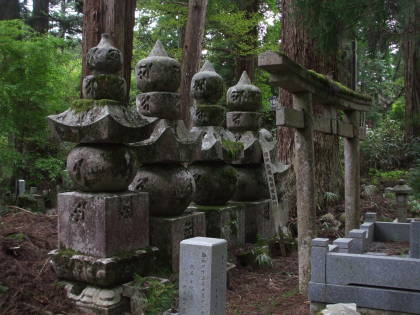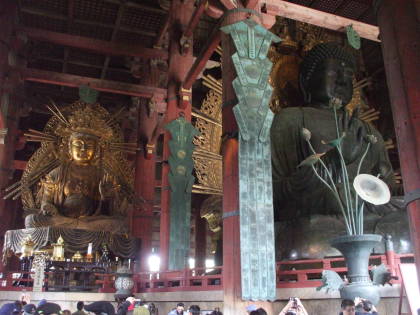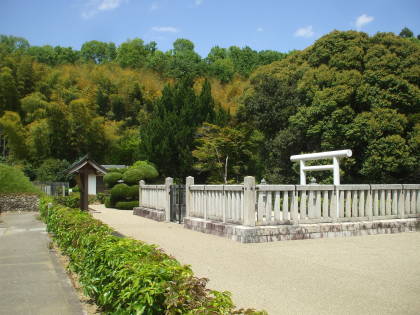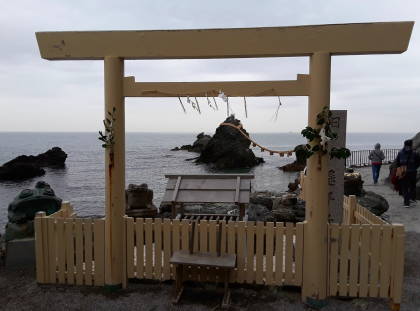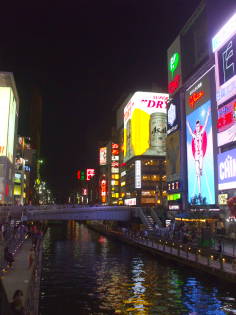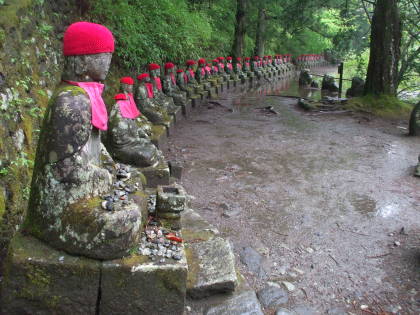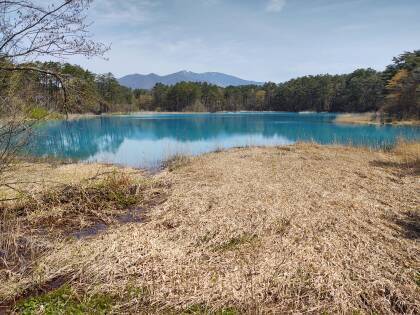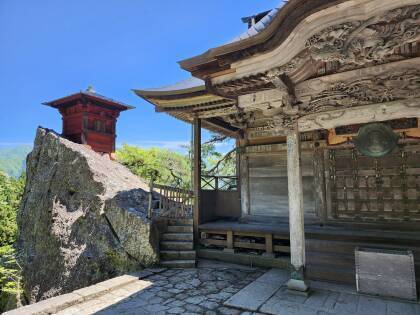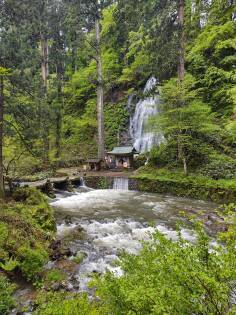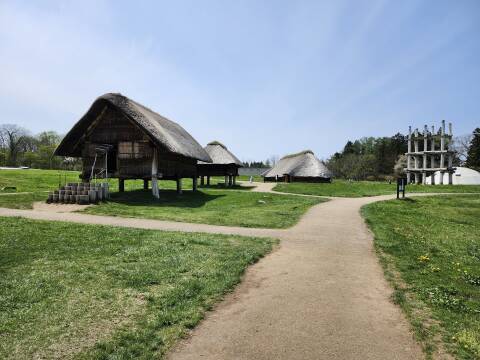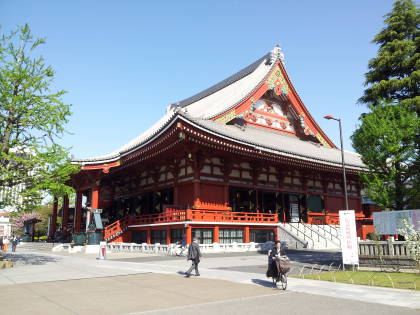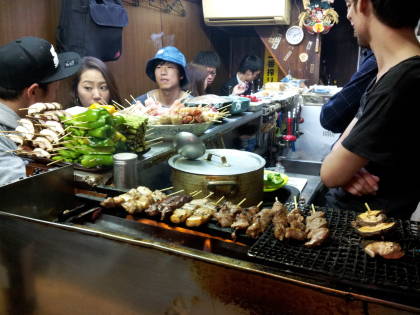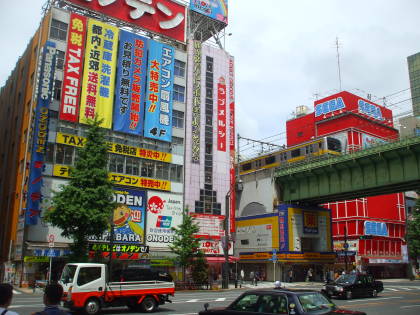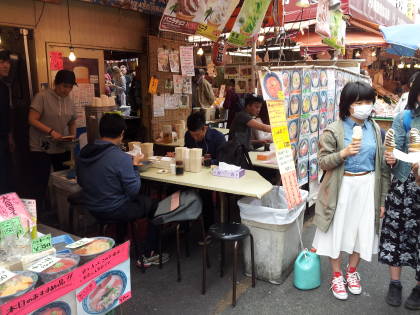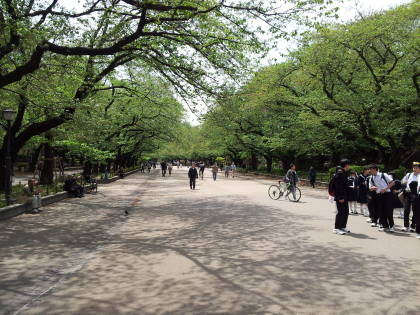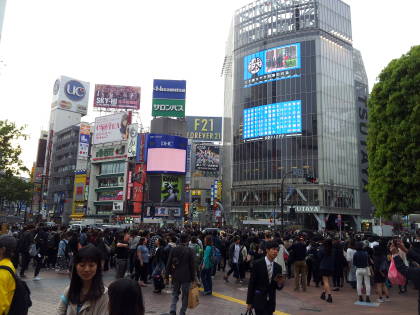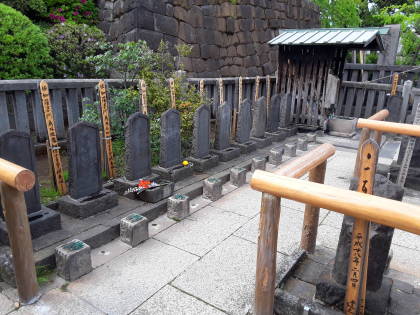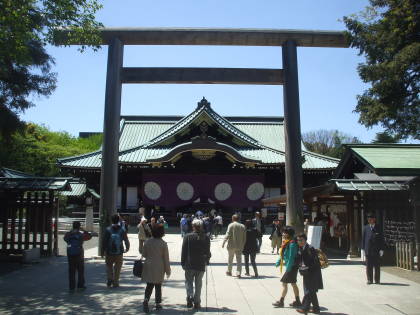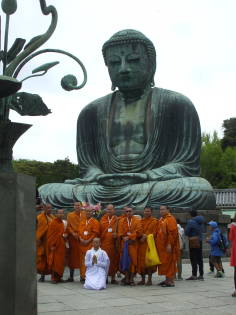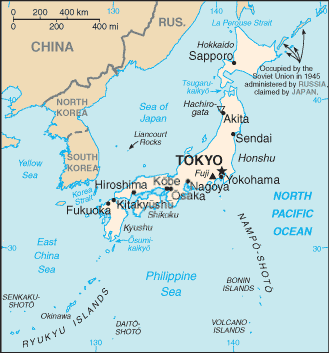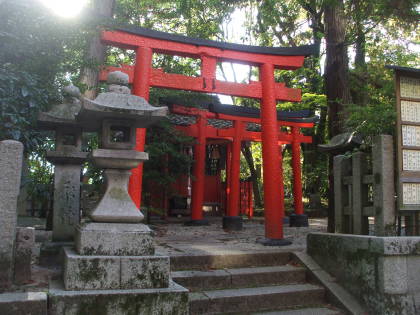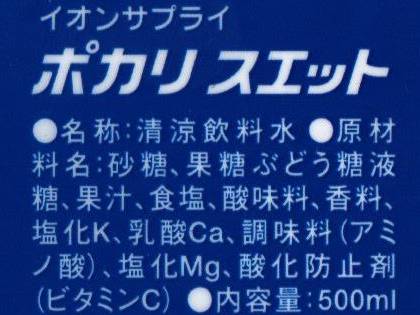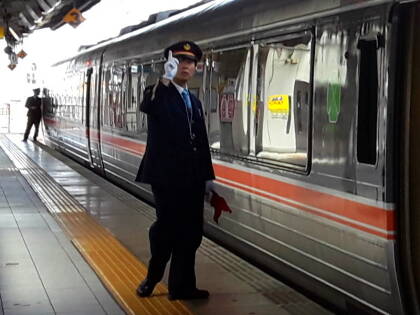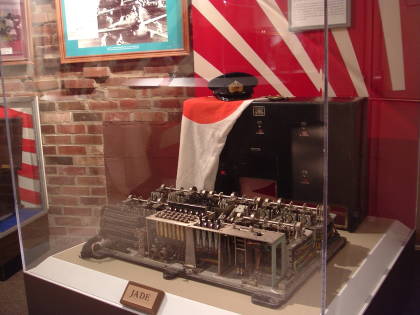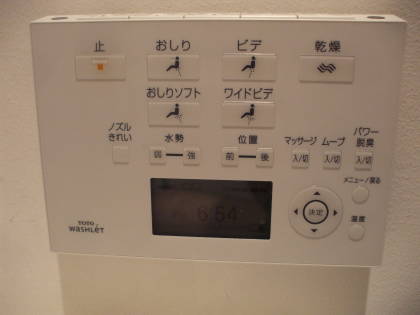
Kushida-jinja
Kushida-jinja in Fukuoka
Kushida-jinja,
the Kushida shrine, is very close to where I was staying
at the Fukuoka Hana Hostel.
Jinja, so it's a Shintō shrine.
It's dedicated to Amaterasu
and Susano-o,
the brother and sister gods who created Japan,
and with it, the universe.
Here I have stepped out of the hostel and walked a short
distance to my right, exited the covered market street,
turned around to my left, and I'm immediately
entering the Kushida shrine complex
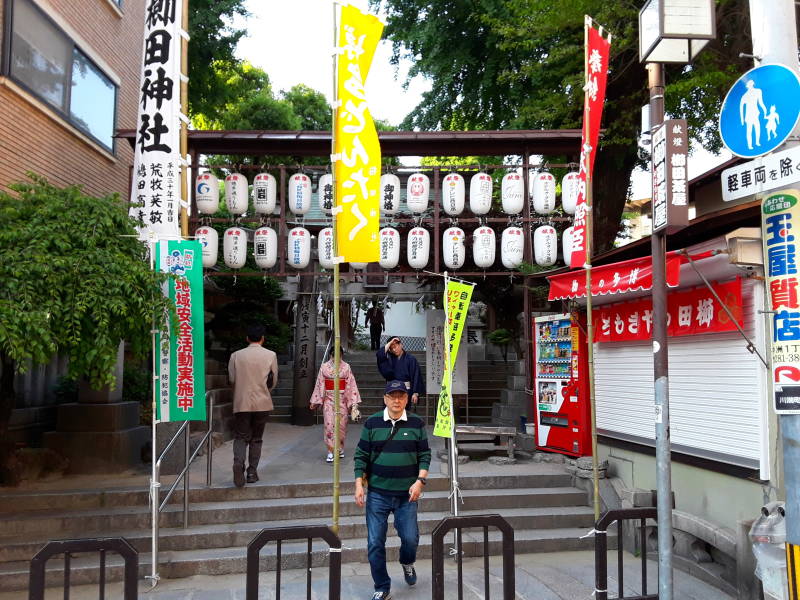
Kushida-jinja is said to have been founded in 757. The earliest Japanese "history" texts are the Kojiki and the Nihon Shoki, written in 711–712 and about 720 CE, respectively, and they were really collections of myths.
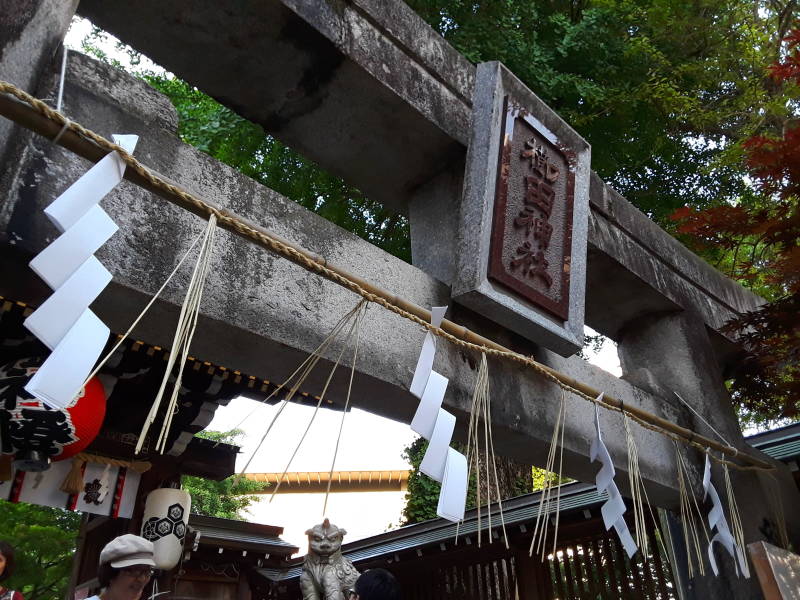
Kushida-jinja is believed to have been a shrine to the local deities since humans first arrived here.
Science tells us that the strait between Japan and the Korean peninsula was quite narrow but still flooded during the Last Glacial Maximum from 25,000 to 20,000 years BP. There is firm evidence of early Upper Paleolithic hunter-gatherers in Japan from 40,000 years BP. They would have walked across from Asia when sea levels were low enough to connect the mainland, Sakhalin, and Hokkaidō.
The Jōmon period with its distinctive pottery spans from about 14,000 BCE to about 1,000 BCE. The people were still hunter-gatherers, but with a complex sedentary culture.
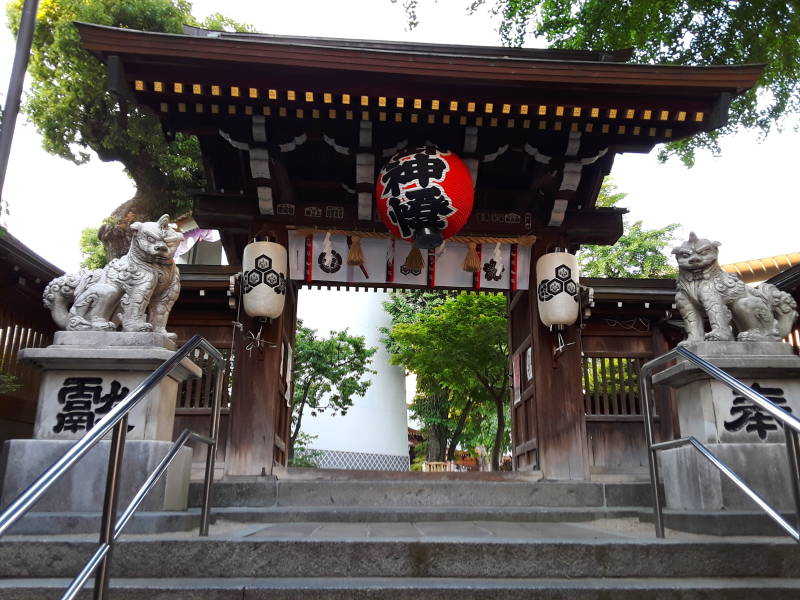
The multiple torii or gates take you into increasingly sacred space.
The zigzag white "lightning bolt" is a shide. They are made from paper, hemp fiber, or other material.
The shide can represent the enshrined and invisible kami, the deities or spirits. And so, the shide may be the focus of devotion.
A twisted straw rope or shimenawa may hold several shide.
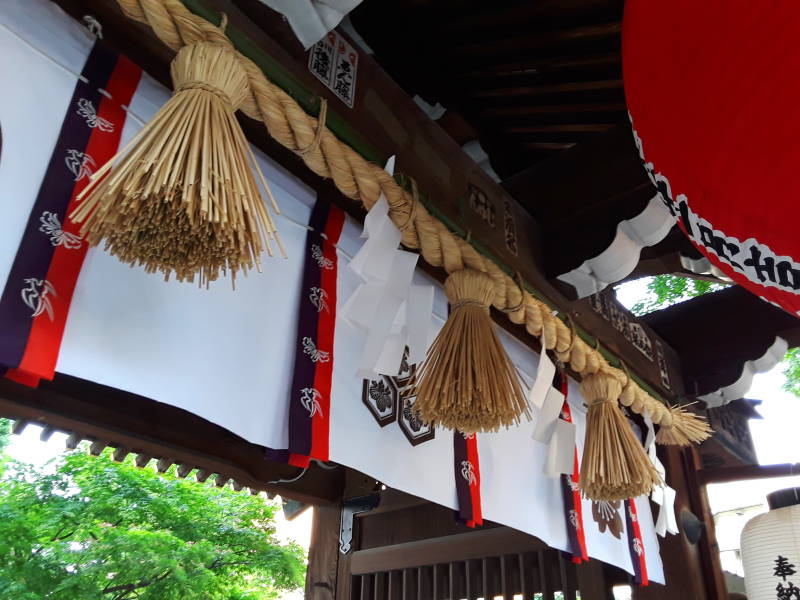
Divine palanquins or portable shrines called o-mikoshi can carry the go-shintai, the "god-body", during a festival. The "god-body" is the central totemic object normally kept in the most sacred area of a shrine. These portable shrines physically protect the go-shintai and hide it from sight.
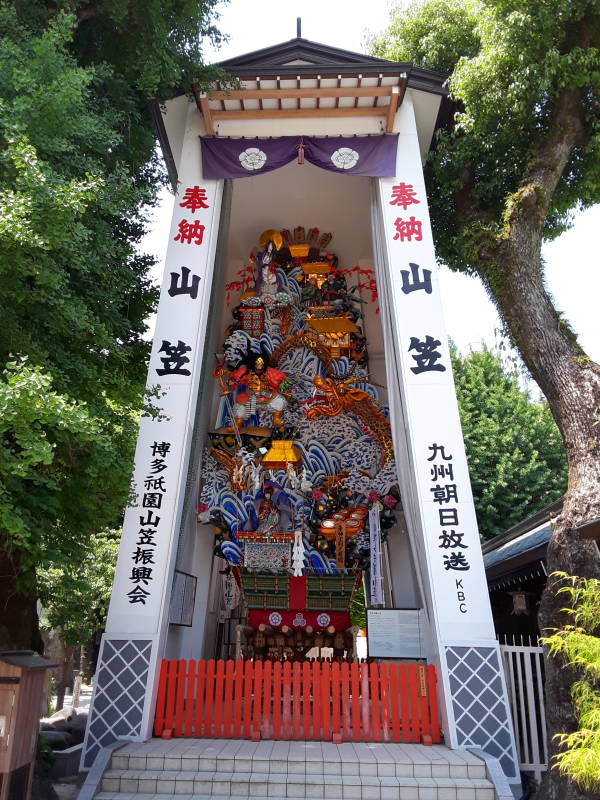
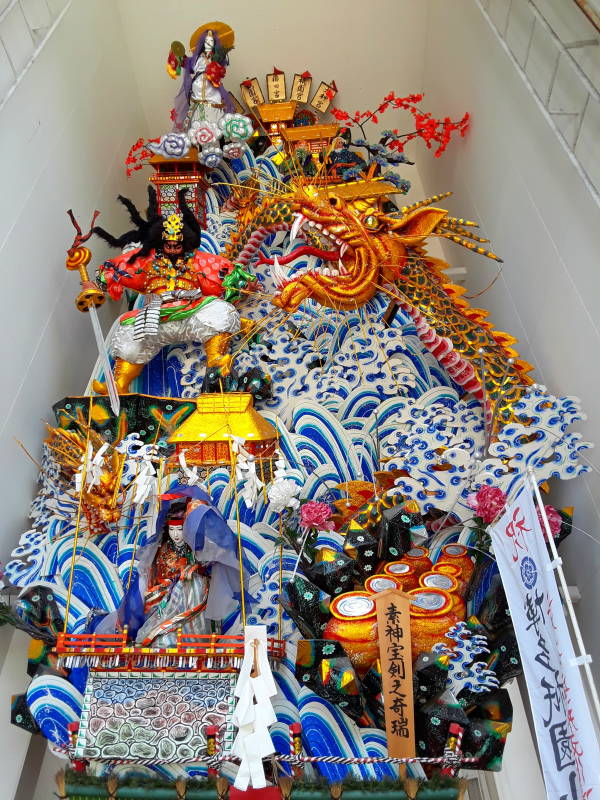
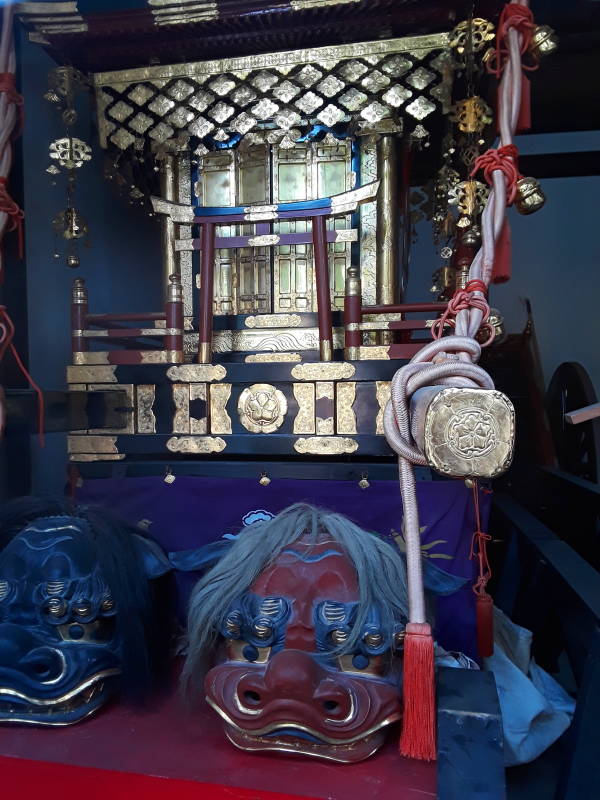
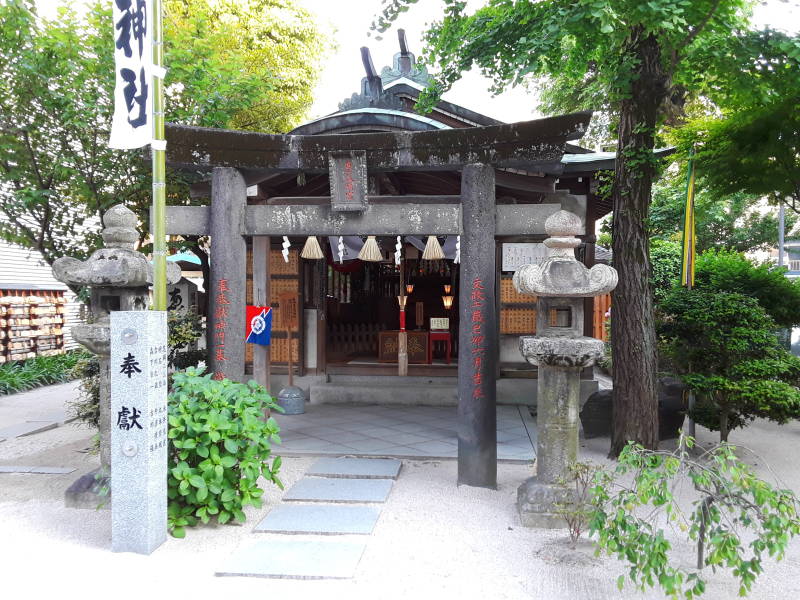
A Shintō shrine has a thick rope to shake, rattling a large bell to awaken the deity or spirit.
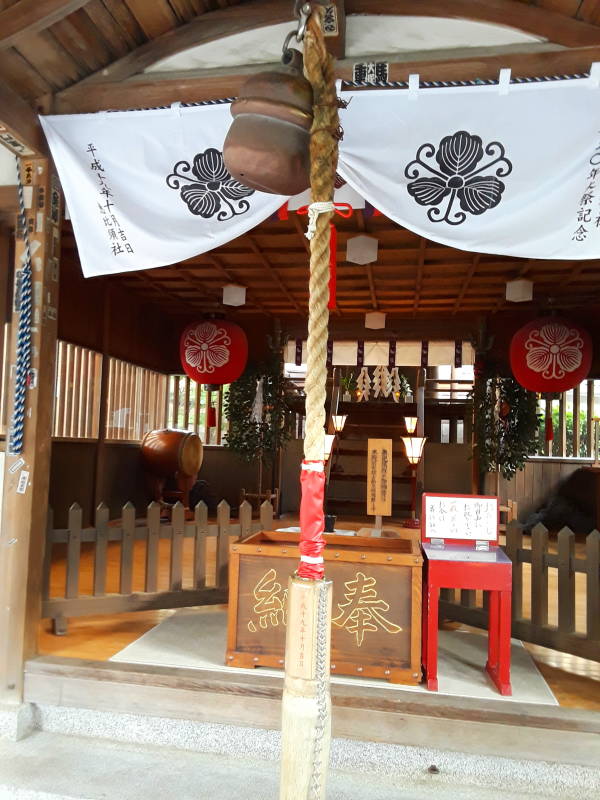
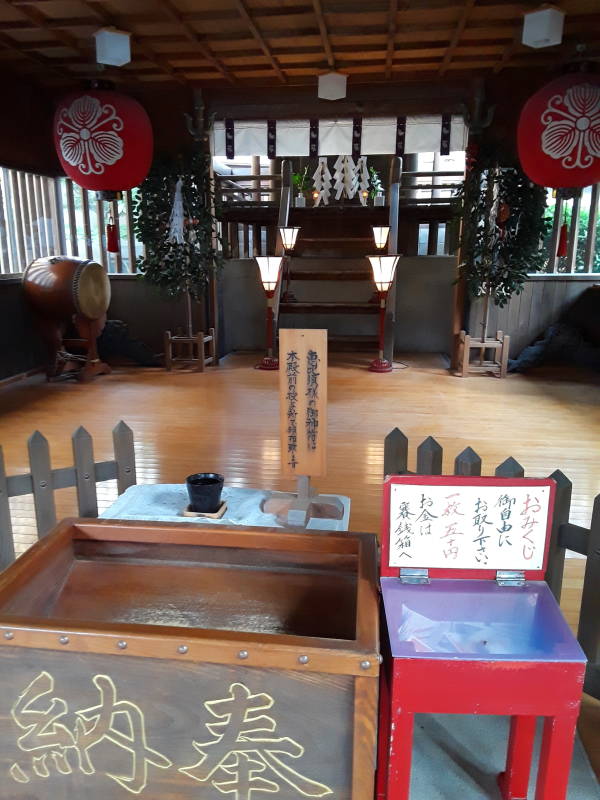
The interior of the shrine is usually austere, like this one.
There is no direct representation of the kami. The shide or paper zigzags indirectly represent its presence, and may be the focus of devotion.
There is a large rack of ema or votive plaques.
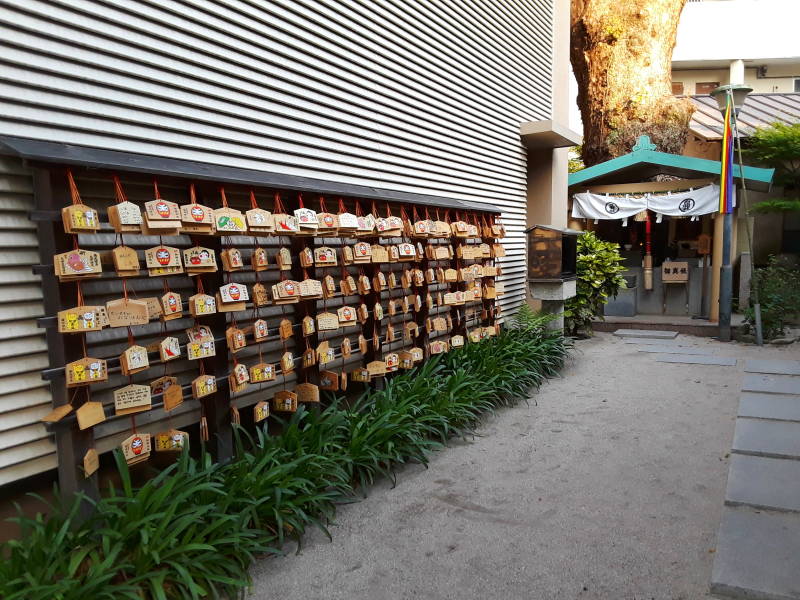
This small shrine has Shintō framing — the twisted straw rope or shimenawa with the shide or paper zigzags, and the thick rope to rattle the bell and awaken the kami.
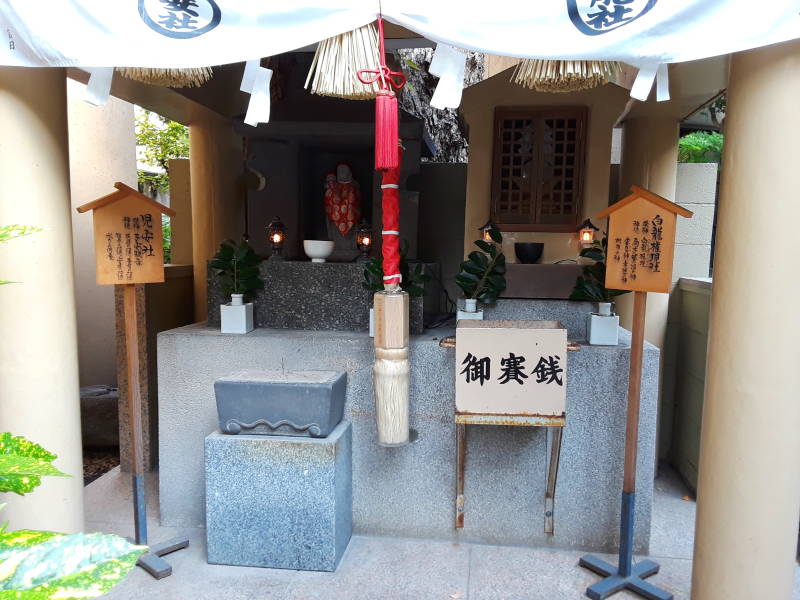
But the altar holds anthropomorphic figures, Buddhist symbols.
The concept of shinbutsu-shūgō held that a Shintō kami could manifest as a Buddhist bodhisattva or bosatsu in Japanese. Buddhist temples began hosting Shintō shrines, and vice-versa.
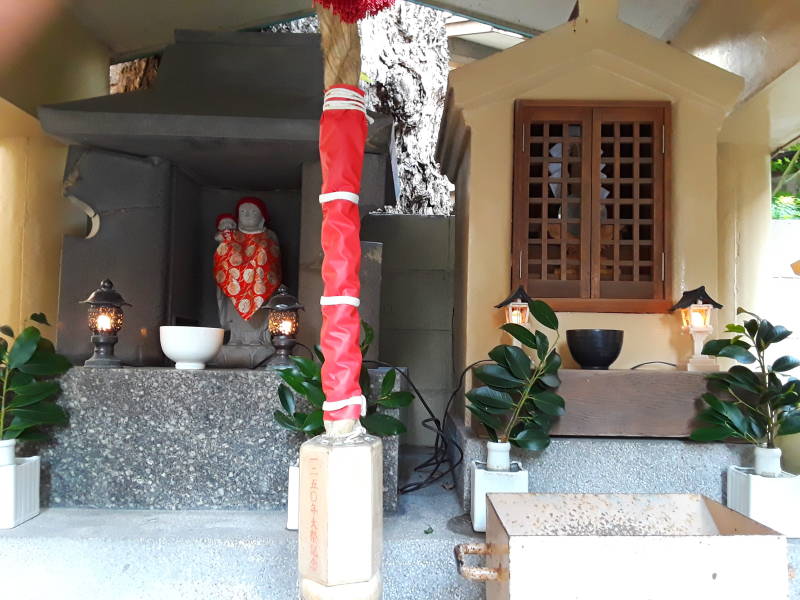
The Emperor returned to power with the Meiji Restoration of 1868. Spiritual life in Japan swung strongly pro-Shintō. Buddhism was suppressed as the cult of the divine Emperor took hold.
Allied cryptanalysis and the Japanese plan for suicidal defenseAnd, eventually, World War II.
Hirohito gave a public address after the war, satisfying the Allies but not really denying the Emperor's descent from the gods.
The Japanese people, on their own, have since turned strongly from Shintō to Buddhism. Shintō remains as an activity of national identity, but now over 90% of funerals are Buddhist, and over one-third of Japanese citizens describe themselves as Buddhist.
The ablutions fountain is for the purification rite or temizu. The shelter or pavilion over the hand-washing basin is called the chōzuya or temizuya, and the water reservoir is the chōzubachi.
Shintō and Buddhism use the same cleansing water rite, but with different specific names. In Buddhism the shelter is the chozu-yakata and the basin itself is the tsukubai. That term is based on the verb tsukubau, meaning "to bow down", to humble yourself.
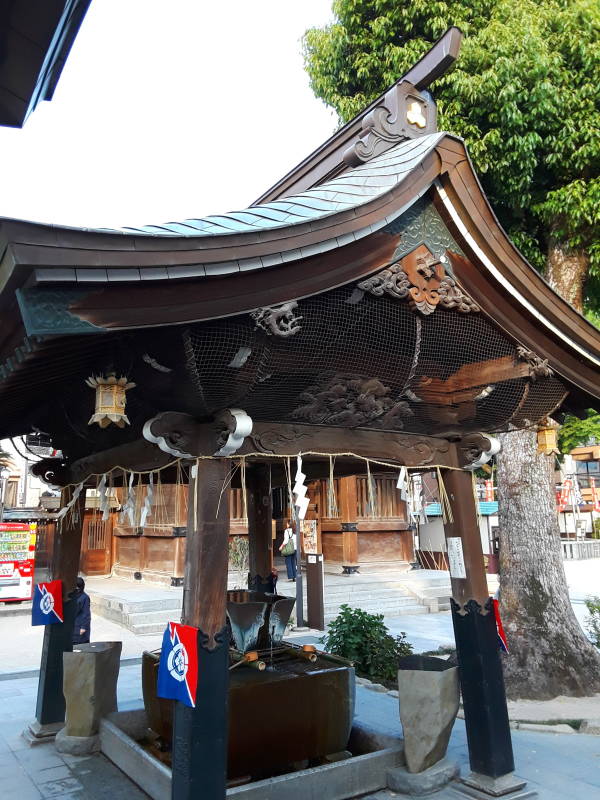
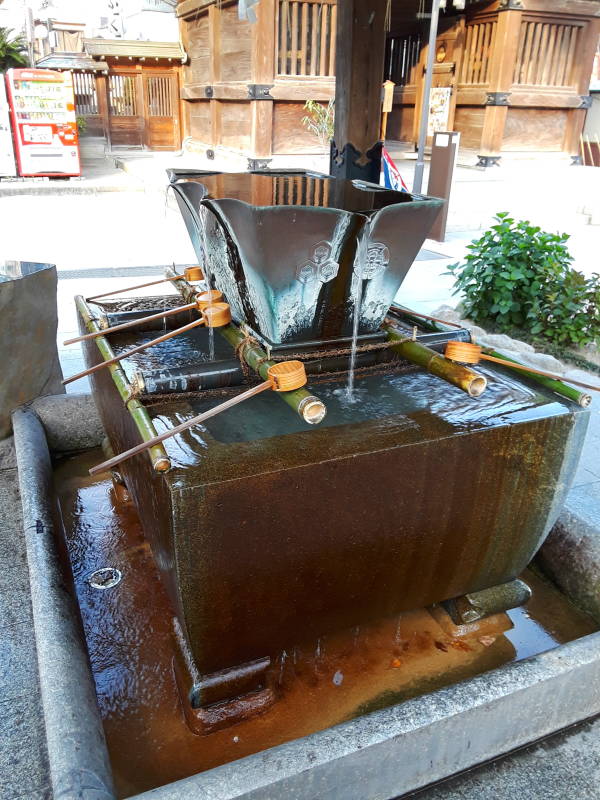
To properly cleanse yourself:
- Pick up the dipper with your right hand, filling it from where water is pouring in or dipping water out of the reservoir.
- Pour the water over the fingers of your left hand, being careful to make sure that the water falls into the gutter around the reservoir.
- Transfer the dipper to your left hand, get more water if you need it, and pour water over the fingers of your right hand.
- Transfer the dipper back to your right hand, again getting more water as needed, and pour water into your cupped left hand.
- Take water out of your cupped left hand into your mouth, swish it around, then spit it into the gutter around the reservoir.
- Raise the dipper up so that the remaining water runs down over the handle and your right hand, falling into the gutter, and return the dipper to the fountain.
Now we can approach the main shrine at Kushida-jinja.
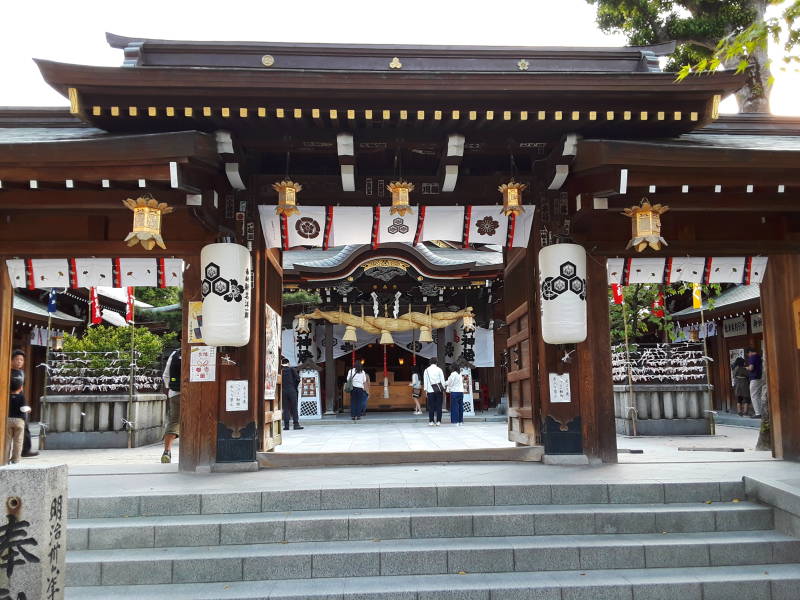
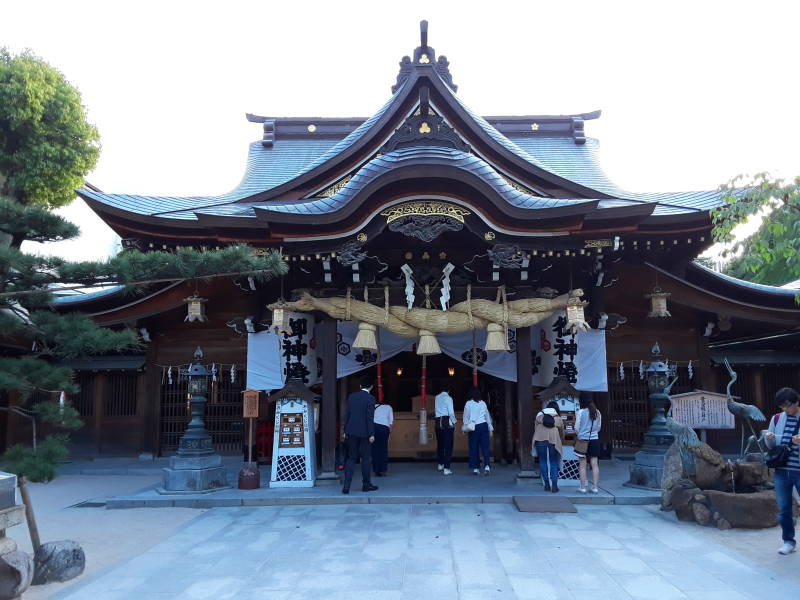
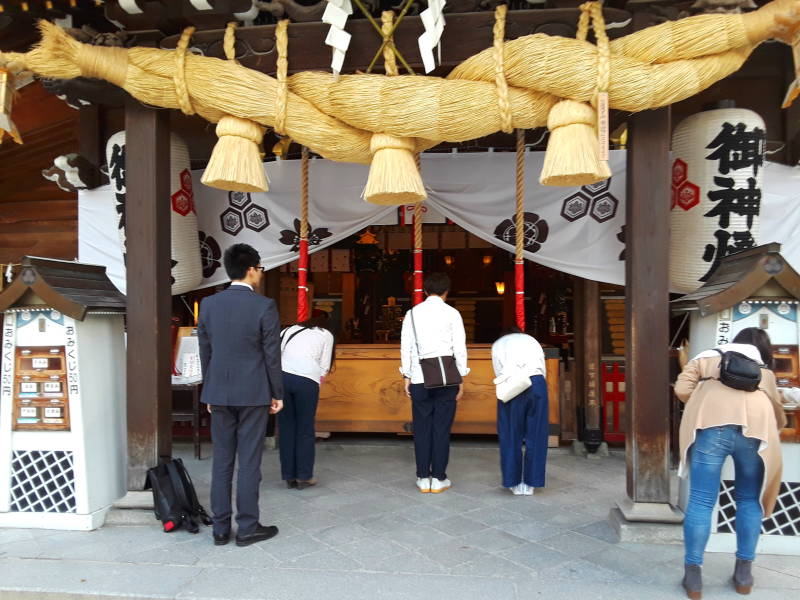
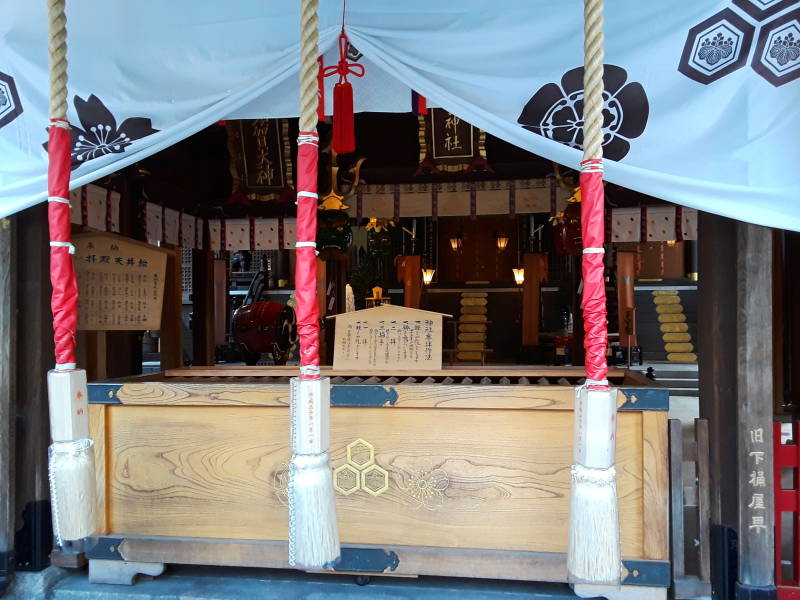
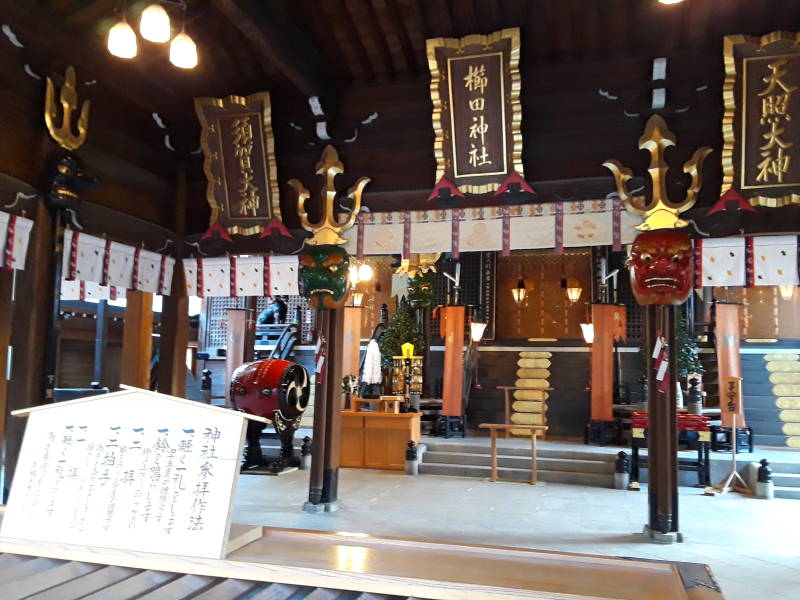
A series of several torii lead to a smaller shrine.
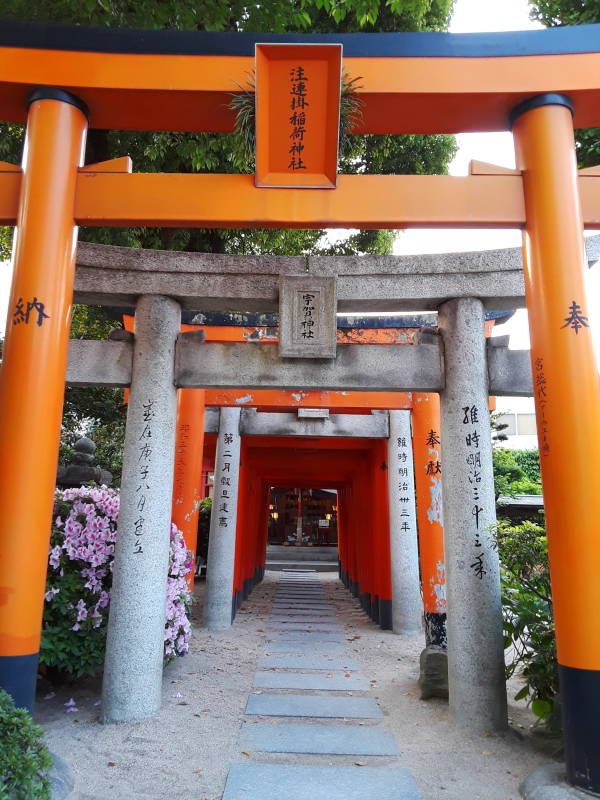
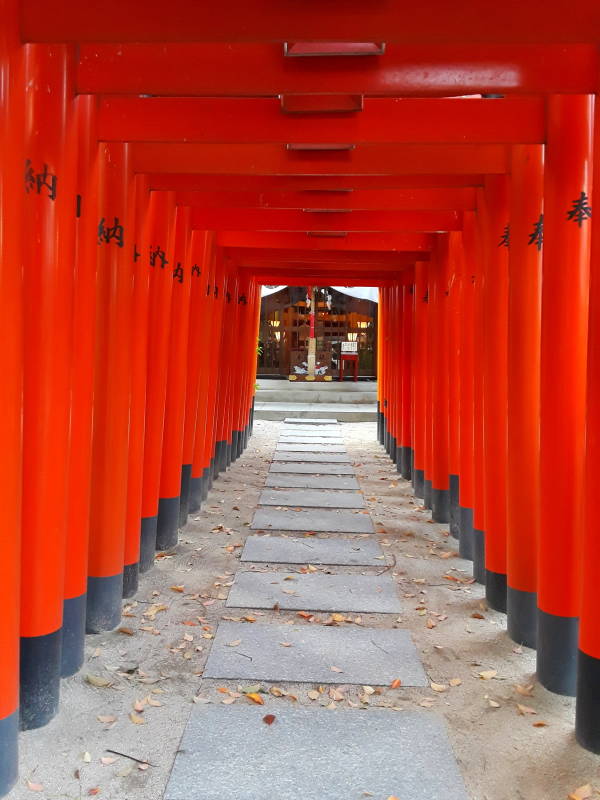
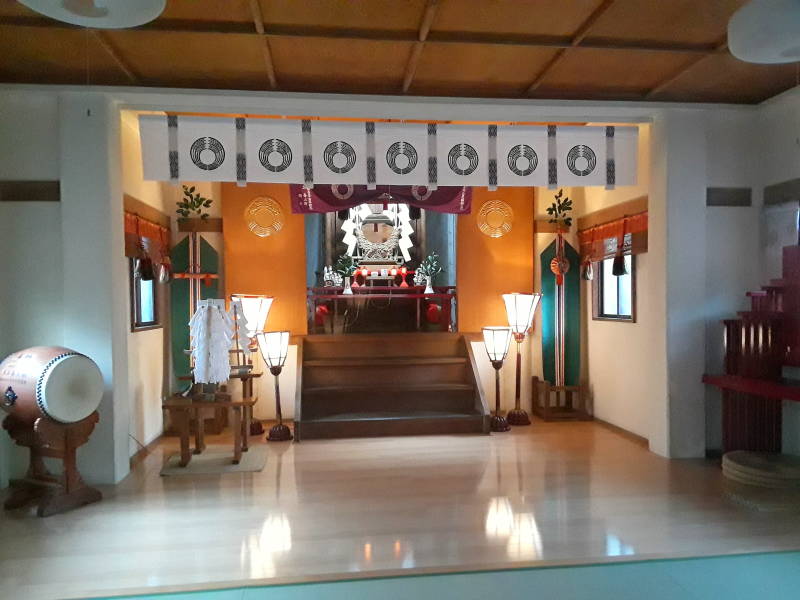
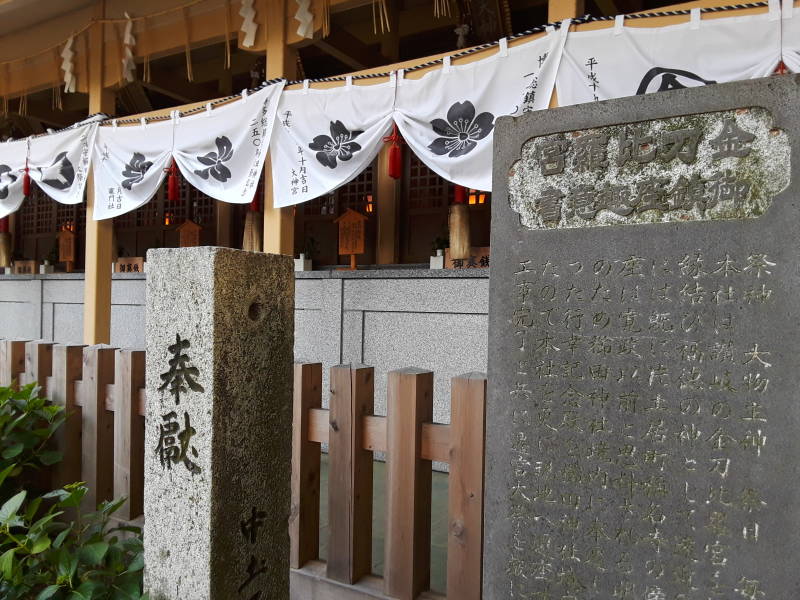
A Shintō Wedding the Next Day
Walking through the Kushida-jinja complex the next morning, I saw that a wedding was underway. Here's something new to check out.
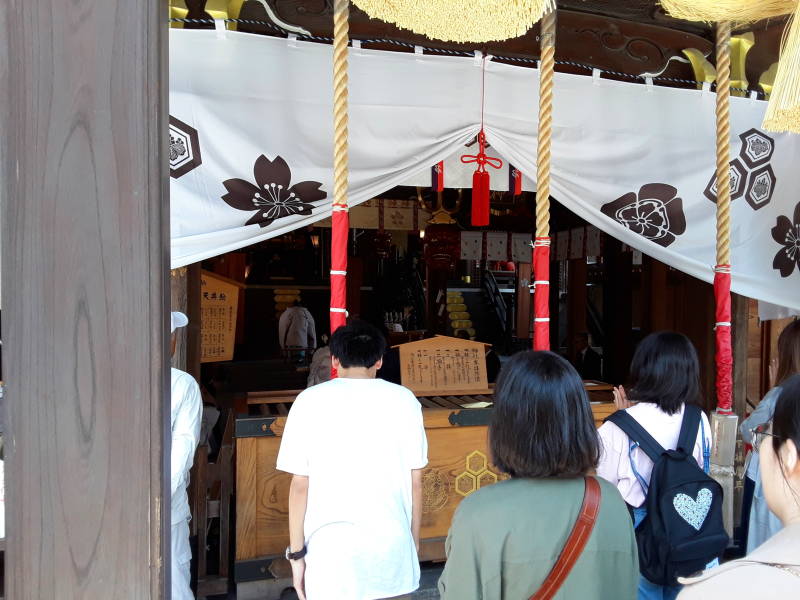
Shintō weddings remain popular, although most funerals are Buddhist.
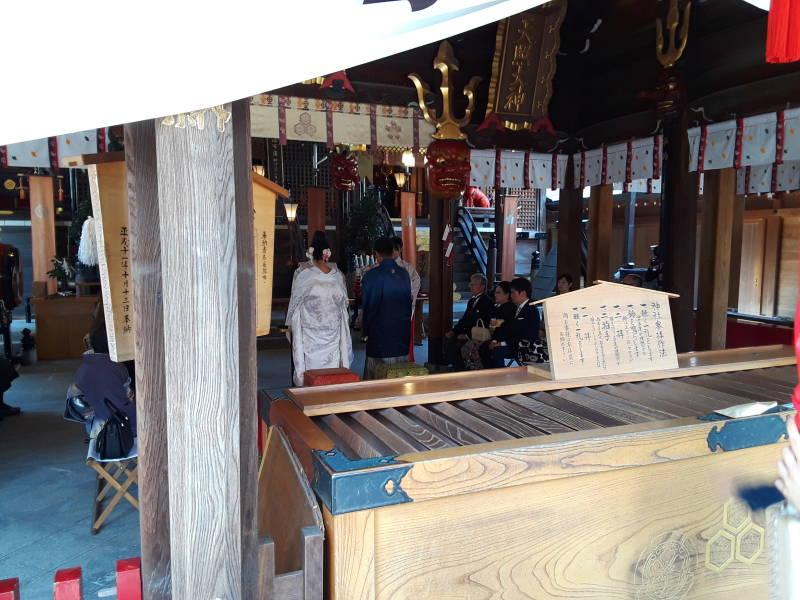
The above is specific to Fukuoka. Or maybe you want to explore other places in Japan.
